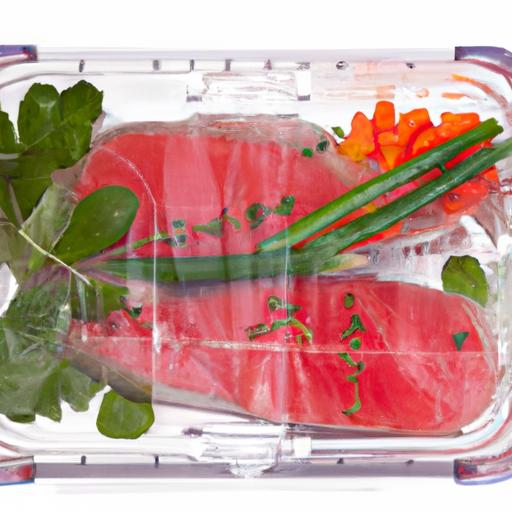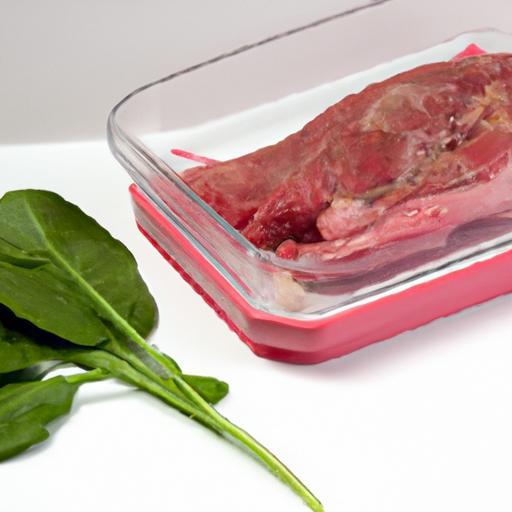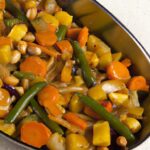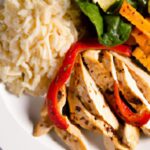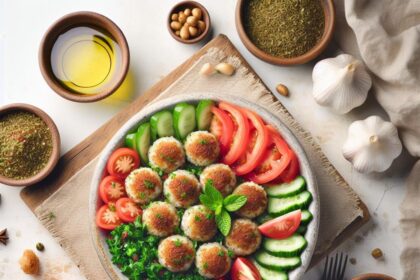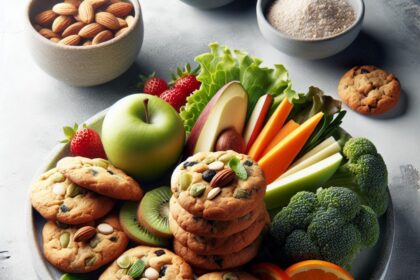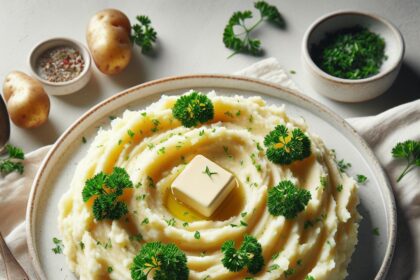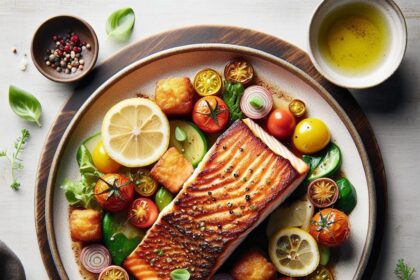In a world where freshness defines flavor, keeping your food sealed tight is no longer a luxury-it’s a necessity. Enter the vacuum sealer: the unsung hero that locks in taste, texture, and nutrients with every press of a button. But with so many options vying for kitchen supremacy, how do you choose the one that truly stands out? In this article, we dive deep into the art and science of sealing freshness, unveiling our top vacuum sealer pick that promises to transform the way you store, savor, and save. Get ready to seal the deal on freshness like never before!
Seal Freshness starts with understanding how vacuum sealing locks in flavors, prevents spoilage, and elevates your food storage game to professional levels. The science behind this preservation marvel lies in removing air-the main culprit of oxidation and bacterial growth-from storage bags, thus extending the life of your ingredients and prepared dishes. Imagine savoring the vibrant aroma of freshly marinated steaks weeks later or gifting homemade granola with that crisp snap intact. This technology isn’t just smart; it’s transformative for culinary creativity and sustainability.
Prep and Cook Time
- Preparation: 10 minutes
- Vacuum Sealing Process: 5 minutes per batch
- Storage and Usage: Up to 2 weeks refrigerated, 6 months frozen
Yield
- Preserves up to 20 bags per session (depending on bag size and sealer model)
Difficulty Level
- Easy – Perfect for beginners and pros alike
Ingredients for Vacuum Sealing Success
- Fresh produce, meats, or prepared dishes: cleaned and prepped
- Vacuum seal bags: BPA-free, textured for efficient vacuum
- Optional: moisture-absorbing pads for wet foods
- Labeling supplies: permanent marker and masking tape
Instructions
- Prepare your food by trimming, seasoning, or portioning as needed to ensure optimal flavor and freshness.
- Place the food into vacuum seal bags, leaving adequate space at the open edge for sealing-generally 3 to 4 inches.
- Smooth out the bag’s opening, removing wrinkles that might affect the seal quality.
- Insert the open end into the vacuum sealer’s sealing channel, ensuring it lies flat and does not contain crumbs or liquid spills.
- Start the vacuum and sealing cycle, watching as air is pulled out and the bag tightens snugly around your food.
- Once sealed, double-check the edge for a uniform, bubble-free seal that securely locks in freshness.
- Label each bag with the contents and date sealed to keep your storage organized and your meals on track.
- Store sealed bags in the refrigerator or freezer, and enjoy consistently fresh, flavorful ingredients whenever you need them.
Chef’s Tips for Maximizing Seal Freshness
- Use freezer-specific bags for moist or freezer-stored foods-they have extra thickness for protection.
- Freeze wet or soft foods slightly before sealing to avoid liquid getting sucked into the machine.
- Cut larger items into meal-sized portions before sealing for convenient thawing and portion control.
- Clean the vacuum channel weekly and periodically inspect the gasket for wear to maintain peak performance.
- Experiment with marinades: seal your protein in your favorite flavors and let it marinate in the bag for up to 24 hours before cooking.
Serving Suggestions
Vacuum sealed foods unlock culinary versatility-serve your sealed-and-frozen sous vide steaks with a side of perfectly crisp roasted vegetables, or bring out snack bags like nuts and dried fruits for an on-the-go health boost. Garnish your platters with fresh herbs or a drizzle of high-quality olive oil to revive the sealed ingredients’ vibrant colors and textures, impressing guests with freshness that tastes like it was just prepared.

| Nutrient | Per Sealed Portion |
|---|---|
| Calories | Varies by ingredient (Example: Sealed chicken breast ~150 kcal) |
| Protein | 25g |
| Carbohydrates | 0g |
| Fats | 3g |
For more ideas on vacuum sealing recipes that enhance longevity and flavor, check out our collection of vacuum sealing culinary inspiration. To dive deeper into the scientific background behind vacuum preservation, visit the National Institutes of Health research on vacuum packaging.
Q&A
Q&A: Seal Freshness – Our Top Vacuum Sealer Pick Reviewed
Q1: Why is vacuum sealing important for food freshness?
A: Vacuum sealing removes air from packaging, which slows down oxidation and bacterial growth, keeping food fresher for longer. It preserves flavors, texture, and nutrients, reducing waste and saving money in the long run.
Q2: What makes our top vacuum sealer pick stand out from the competition?
A: Our top pick combines powerful suction, user-friendly controls, and durable construction. It offers multiple sealing modes for various food types, an airtight seal every time, and easy maintenance. Plus, it’s compact enough for any kitchen countertop without sacrificing performance.
Q3: Can this vacuum sealer handle both dry and moist foods effectively?
A: Absolutely! Whether you’re sealing crunchy snacks or juicy marinated meats, this sealer adapts. Its adjustable settings prevent liquid spills during sealing, ensuring a tight seal without mess or hassle.
Q4: How does using a vacuum sealer benefit freezer storage?
A: By eliminating air, vacuum sealing prevents freezer burn-a common culprit behind dried-out, flavorless frozen food. Your meats, vegetables, and leftovers stay fresher, retaining texture and taste even after months in the freezer.
Q5: Is the vacuum sealer easy to use for beginners?
A: Definitely. With straightforward buttons and clear indicators, first-time users can quickly master vacuum sealing. The device includes helpful guides and automatic sealing cycles to remove guesswork.
Q6: What kind of bags or rolls work best with this vacuum sealer?
A: The sealer is compatible with standard vacuum sealer bags and rolls. It also supports reusable and BPA-free bags, giving you eco-friendly options. Using recommended supplies ensures optimal seals and longevity of the unit.
Q7: Can the vacuum sealer be used for sous vide cooking preparation?
A: Yes! Our top pick creates leak-proof seals that make it ideal for sous vide. It locks in juices and flavors, allowing you to cook food evenly in temperature-controlled water baths without worry of water infiltration.
Q8: How do I maintain and clean the vacuum sealer?
A: Regularly wipe the sealing area and drip tray with a damp cloth. Avoid submerging the machine in water. Most models feature removable parts for easy cleaning, keeping your sealer hygienic and functioning smoothly.
Q9: Is this vacuum sealer worth the investment for everyday cooks?
A: For anyone serious about reducing food waste, meal prepping, or expanding cooking techniques, this vacuum sealer is a game-changer. It’s durable, efficient, and versatile, delivering freshness that pays off in taste and savings.
Q10: Where can I find the best deals on this vacuum sealer?
A: Look for seasonal sales at major retailers, online marketplaces, or directly on the manufacturer’s website. Signing up for newsletters or deal alerts can also unlock exclusive discounts and bundle offers.
In Conclusion
In the quest to lock in freshness and banish freezer burn, a reliable vacuum sealer is more than just a kitchen gadget-it’s your food’s best ally. Our top pick stands out not only for its robust sealing power but also for its ease of use and versatility, promising to keep your meals crisp, flavorful, and ready whenever you are. Whether you’re preserving the harvest, prepping meals in advance, or simply aiming to reduce waste, investing in a quality vacuum sealer transforms how you store food. So go ahead-seal the deal on freshness and savor every bite as if it were just caught or cooked. Your taste buds (and your wallet) will thank you.